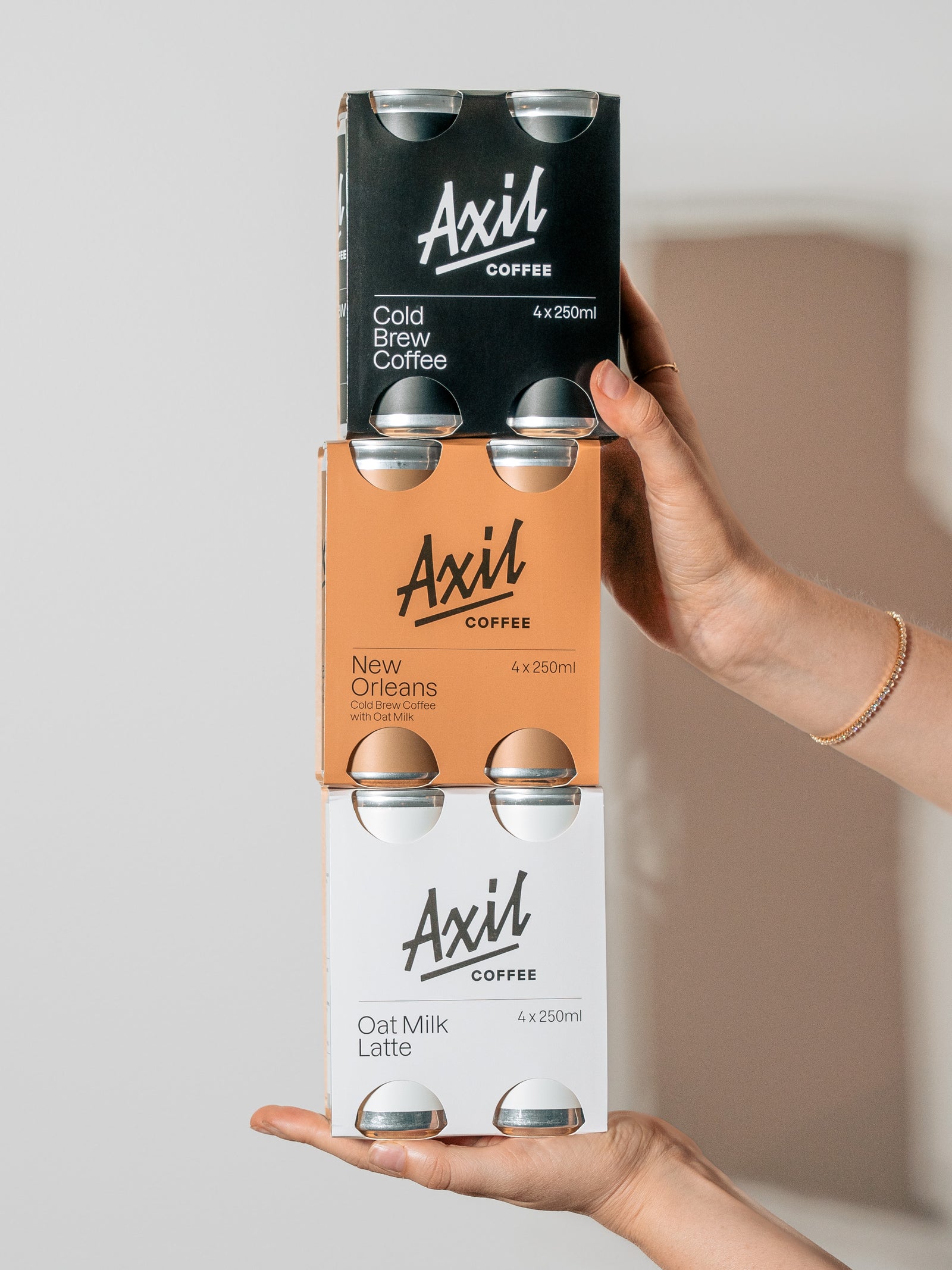Your Cart is Empty
Spend over $75 to score free shipping for all Aussie orders!
Spend over $75 to score free shipping for all Aussie orders!
How To: The Ultimate Guide to Making the Perfect French Press Coffee

Whether you’re a coffee connoisseur or a coffee novice, when it comes to “coffee equipment”, there’s a high chance that you’ve come across the humble French press at some point in your life. Perhaps one of your first interactions with an at-home cup of coffee was made with the classic coffee brewer (well, if you don’t count instant coffee).
The French Press has a history dating back to the fifties, and there’s a reason why it’s loved by so many, even to this day. The system is generally inexpensive and straightforward, making a killer cup of coffee with minimal effort, not to mention the bonus of its beautiful and timeless design. However, to get the most out of your French Press and for a truly delicious brew, just like any other coffee equipment you must understand the processes and the nuances of the device itself. In this guide, we’ll take you through the steps on how to master the French Press technique so you can enjoy the perfect brew, every single time.
The history
Before we dive into the how-to of the French Press, let’s take a brief look at its history.
The very original design for the French Press, which also goes by the name of plunger and cafetiere, was patented in 1852 by two French men; Mayer and Delforge - hence the “French” Press. However, with a poor sealing contraption inside the carafe, this initial iteration was disregarded and the system that is likened to what is available in the modern world was developed in 1929 by Italians, Attilio Calimani and Giulio Moneta.
Skip to 1958 where Italian, Faliero Bondanini further developed the aforementioned iteration, establishing a new and improved design that was patented, eventually leading to what we now use today.
The French Press and its components:
The French Press is a full immersion brewing system with a narrow cylinder body made of heat-resistant plastic or glass and with and a cool-to-touch plastic or stainless steel handle. For a glass or plastic carafe, the body is fitted with a stainless steel protective frame and a plastic lid that is attached to the piston made of wire mesh which filters and separates the brewed coffee from the coffee grounds. The filter component is further broken down into layers consisting of a cross plate, filter screen and a spiral plate that is attached to a plunging rod and knob.
The versatility of the French Press allows you to make as little or as much coffee as you like, but the taste of the final cup is largely dependent on the size of your grind, how many cups you’re brewing for as well as the overall brewing time. For example, at a coarser grind, it’s recommended that the coffee is brewed for at least 6-8 minutes for a flavoursome result. A finer grind will yield a bolder brew in a shorter period of time; however, this overrides the unique characteristics of the French Press and an alternative immersion brew method with a shorter brew time, such as the Aeropress is recommended.
Equipment & Ingredients:
There are no hard and fast rules to the French press, nor a right or wrong for brewing. However, we’ll take you through our recommendations on accompanying equipment, ratios, grind and more to get your cup of French press coffee "just right".
-
The French Press: Get yourself a French Press, whether that is a stainless steel, glass or a heat-resistant plastic version, consisting of a body or brewing chamber, an in-built mesh filter and lid. At Axil, we recommend the classic Bodum Chambord French Press.
-
Kettle: The benefit of using the French press is that a precise and measured water pour is not required, unlike some other coffee brewing methods.
-
Grinder: Here at Axil, we recommend investing in a grinder to grind your beans fresh before every new brew. Look for a Burr grinder that allows precise grinding for a medium-to-coarse grind.
-
Digital Scale: For a balanced flavour profile, measure out your coffee grinds using a digital scale. For French Press, anything between a ratio of 1:14-1:16 is recommended, depending on how weak or strong you like your cup of coffee.
-
Stirring: To prevent any clumping and to ensure even saturation of your coffee grinds, you’ll be required to stir the slurry which can be done with a coffee-specific stirring paddle. Otherwise, simply use a wooden or silver spoon.
-
Coffee beans: To ensure the best-tasting coffee, we always recommend using high-quality, freshly roasted coffee beans. A light roast best suited to filter style coffee is recommended; however, darker, espresso style roasts can work just as well. Experiment and explore with various roast profiles and origins to find what best suits your taste preference.
With the necessary equipment and ingredients available, we’re now ready to move onto the step-by-step French press brewing process.
The Step-by-Step Process:
-
Preparing your French press:
- Place your French press on a heat-proof, non-slip surface. Hold the cool-to-touch handle and pull the plunger rod up and lift the lid off the press.
- Both stainless steel and glass French presses require preheating in order to maintain the temperature consistency throughout the duration of brewing. Pour about a ¼ cup of boiled water into the carafe or body, wrapping your hand around the French press and pouring the water out once the body feels warm to touch.
2. Measure and grind the coffee beans:
- The ratio of coffee-to-water depends on personal preferences; however, aim for anything between 1:14 to 1:16 ratio or use approximately 1 rounded tablespoon of ground coffee beans for every 4 oz. (around 118 ml) of water.
- Grind the beans to a medium-coarse consistency, adjusting the grind size depending on your preference.
3. Heating the water:
-
Boil fresh, filtered water in line with the selected coffee-to-water ratio.
4. Adding the water and blooming the coffee beans
-
Add the ground coffee beans to the carafe and pour the entirety of the boiled water into the French press. When the kettle boils, wait for 30 seconds to a minute to let the temperature drop to around 92-96 degrees Celsius, which is considered the optimal coffee brewing temperature.
-
Let the coffee and boiling water sit for around a minute. This blooming step allows some of the CO2 in the beans to degas as it can affect the extraction process, which can negatively affect the final taste of the coffee.
-
This blooming step will cause the coffee to crust. To ensure even wetting of the coffee grounds and to eliminate any dry coffee, stir through the coffee with a spoon. To ensure the water stays hot, place the lid back onto the press, however do not press down on the plunging rod immediately.
5. Pressing, extracting and decanting:
-
After waiting an additional 5 minutes, slowly press down on the plunger rod to filter and separate the brewed coffee from the grounds.
-
Again, ensure this is done on a non-slip surface to prevent any slipping.
-
Decanter your brewed coffee directly into prepared mugs or cups or decanter all of the coffee into a coffee specific pourer like the Hario heatproof decanter to stop the grinds from continuing to “brew”.
6. Clean up and enjoying your coffee:
-
To make sure your French press is clean for the next use, make sure to thoroughly clean it, in particular the filter component by rinsing the layers of the cross plate, mesh filter screen and the spiral plate.
-
Now it’s time to sip and enjoy your freshly brewed French press coffee!
Now that we’ve taken you through the step-by-step brewing process, you are familiar with the basics in making a delicious cup of French press coffee. In the next section, we’ll take you through some recommendations for experimentation and tips on how to keep your French press in its optimal condition.
Recommendations & Tips:
There are no right or wrongs when it comes to brewing coffee, however, we recommend you following some of our tips for the best French press coffee experience.
When brewing French press coffee, people commonly leave their coffee within the press itself. This can often lead to a bitter flavour profile being drawn from the coffee grounds, so it’s recommended that you decanter all of your coffee once the plunging is complete.
A coarser grind is usually used for the French press, primarily for its longer brewing time. In this instance, what might be a bitter flavour profile from a dark and bold roast can be masked when using a French press. However, when using a finer grind in the French Press, using even the lightest roast will provide greater flavour clarity.
Lastly, as mentioned in the previous section, we recommend that the French press is thoroughly cleaned every single time, in particular the filter component by unscrewing and separating the spiral plate, filter screen and cross plate. Old filters and build up of old oils within the filtering component can oftentimes lead to freshly brewed coffee tasting rancid, sour and just plain strange!
Congratulations, you now know how to brew the perfect cup of French press!
Our step-by-step process will guide you through the fundamentals of a coffee press, but thanks to the versatility and forgiving nature of the brewing method, there's room for trial and error.
For the best French press coffee drinking experience, we recommend using the highest quality beans such as Axil’s signature series, selected by and roasted for the Australian and World Barista Champions, bringing acidity, complexity and intricate flavours to every cup. Enjoy the exquisite taste that has wowed the world coffee champions and judges of the highest calibre, all in the comfort of your own home.
To get the most out of your coffee beans, we also recommend investing in the necessary adequate equipment. Begin your French press coffee journey today with Axil Coffee's signature series coffee beans and the classic Bodum Chambord, hand selected by our coffee professionals right here at Axil.
Happy French pressing!
Also in Axil Coffee Roasters
Subscribe
Sign up to get the latest on sales, new releases and more …



